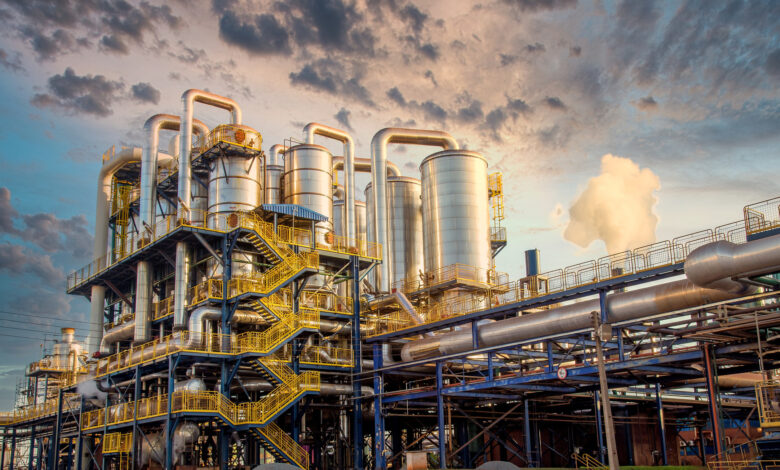Industrialization in 2024: The Path Forward

Industrialization, a cornerstone of economic development, has transformed societies since the advent of the Industrial Revolution. As we stand in 2024, industrialization is no longer solely about the production of goods and economic growth. It now encompasses a wide range of technological, environmental, and social considerations that shape its future direction. The complex and multifaceted nature of today’s industrial landscape presents both challenges and opportunities as industries across the globe seek to adapt to the changing dynamics of production, consumption, and sustainability.
The Role of Technology in Modern Industrialization
Technological innovation continues to be the driving force behind the latest wave of industrialization, often referred to as the “Fourth Industrial Revolution” or “Industry 4.0.” Unlike previous phases, this revolution is characterized by the fusion of technologies that blur the lines between the physical, digital, and biological worlds. Key elements of this industrial transformation include artificial intelligence (AI), robotics, the Internet of Things (IoT), and advanced manufacturing techniques such as 3D printing and automation.
AI has taken center stage in manufacturing, enabling greater precision, efficiency, and decision-making capabilities. With the help of AI-driven predictive analytics, companies can anticipate market trends, optimize production schedules, and even reduce waste. Robotics, too, have become more sophisticated, offering solutions that reduce labor costs while increasing output quality. From automotive assembly lines to consumer electronics, AI and robotics are reshaping the manufacturing process at a rapid pace.
At the same time, IoT devices are revolutionizing the way industries monitor and manage their operations. Sensors embedded in machinery collect real-time data that help prevent breakdowns, optimize energy use, and maintain safety standards. IoT technology is also enabling “smart factories” where machines communicate with each other to autonomously adjust production processes.
Advanced manufacturing techniques such as 3D printing are opening new frontiers by allowing industries to rapidly prototype and produce complex parts on demand. This is particularly beneficial in sectors such as aerospace, automotive, and healthcare, where custom components can be manufactured with precision and without the need for large-scale production facilities.
Sustainability: The New Industrial Imperative
Industrialization in 2024 cannot be discussed without addressing sustainability. Global concerns about climate change, resource depletion, and environmental degradation have forced industries to reconsider traditional models of production. As a result, sustainability has become a key driver of industrial policy and corporate strategy.
One of the most significant shifts is the movement towards renewable energy. Industries are increasingly relying on solar, wind, and hydropower to meet their energy needs, reducing their carbon footprint and dependence on fossil fuels. In many parts of the world, government incentives and international agreements are accelerating this transition, particularly in heavy industries like steel, cement, and chemicals, which are traditionally energy-intensive.
Another crucial element of sustainable industrialization is the circular economy, a model that promotes the reuse, repair, remanufacturing, and recycling of materials. Unlike the traditional linear economy—based on a take-make-dispose approach—the circular economy seeks to minimize waste and make the most of available resources. This shift is especially important in industries that deal with large volumes of materials, such as electronics, textiles, and automotive manufacturing. By designing products that are easier to disassemble, repair, and recycle, industries are reducing waste while also creating new business opportunities.
Additionally, companies are facing growing pressure from consumers and regulators to adopt environmentally responsible practices. Many have responded by setting ambitious targets for reducing greenhouse gas emissions, water use, and waste production. These goals are often supported by innovative technologies such as carbon capture and storage (CCS) and the development of alternative materials that are less harmful to the environment.
One example of this innovation is the growing emphasis on biodegradable and sustainable packing material choices. In a world where single-use plastics and excessive packaging are under scrutiny, companies are exploring alternatives like plant-based plastics, recycled materials, and compostable packaging to reduce their environmental impact.
Globalization and Geopolitical Dynamics
While technology and sustainability dominate the conversation around modern industrialization, the global industrial landscape in 2024 is also shaped by geopolitical factors. The COVID-19 pandemic revealed vulnerabilities in global supply chains, prompting many nations to rethink their reliance on foreign manufacturing hubs. In response, there has been a surge in reshoring and nearshoring initiatives, where industries are bringing production closer to home or to neighboring regions to minimize supply chain disruptions.
This trend is particularly noticeable in sectors such as semiconductors, pharmaceuticals, and medical equipment, where supply shortages during the pandemic exposed the risks of over-reliance on a single region or country. As a result, countries like the United States and those in the European Union are making concerted efforts to reinvest in their domestic manufacturing capabilities.
However, this shift is not without its challenges. For one, reshoring often involves higher labor costs, which can make goods produced domestically more expensive. Additionally, many nations that are heavily dependent on exports, such as China, face economic uncertainties as countries diversify their supply chains. Geopolitical tensions, particularly between major powers like the U.S. and China, add another layer of complexity to global industrial strategies.
Despite these challenges, globalization remains an essential aspect of industrialization. Multinational corporations continue to benefit from global markets, and international collaboration in areas such as research and development, especially in high-tech sectors like AI and biotechnology, remains strong. The key to balancing globalization with local industrial needs lies in creating more resilient, flexible, and diversified supply chains.
The Workforce of the Future
Another critical aspect of industrialization in 2024 is the changing nature of the workforce. Automation and AI have raised concerns about job displacement, particularly in sectors that rely heavily on manual labor. However, rather than eliminating jobs outright, these technologies are reshaping the skills that workers need to thrive in a modern industrial economy.
In many cases, automation is taking over repetitive and hazardous tasks, freeing up workers to focus on higher-value roles that require creativity, critical thinking, and problem-solving. This shift is creating new opportunities in areas like programming, systems integration, and data analysis, where skilled workers are in high demand.
To meet the demands of this new industrial landscape, education and training programs are evolving. Governments and companies are investing in initiatives that reskill and upskill workers to prepare them for jobs in advanced manufacturing, AI, and other technology-driven sectors. Vocational training, apprenticeships, and partnerships between industry and educational institutions are becoming increasingly important as the nature of work continues to evolve.
At the same time, there is a growing focus on workplace safety and well-being, particularly in light of the pandemic. Employers are adopting new technologies such as wearable devices that monitor workers’ health and safety in real-time, ensuring that they are protected in hazardous environments.
Conclusion: Navigating the Future of Industrialization
As industrialization continues to evolve in 2024, it is clear that the path forward will be shaped by a delicate balance between technological innovation, sustainability, and geopolitical realities. The industries that thrive in this new landscape will be those that can adapt to rapid changes while also addressing the environmental and social challenges of our time.
Technologies like AI, IoT, and 3D printing will continue to drive efficiency and innovation, while sustainable practices, such as the adoption of renewable energy and circular economy models, will become increasingly central to industrial strategies. At the same time, the future workforce will need to embrace new skills and mindsets to succeed in an environment that demands flexibility, creativity, and technological proficiency.
Industrialization in 2024 is no longer just about economic growth—it’s about creating a future where industries can flourish while also contributing to the well-being of people and the planet. This new paradigm, while complex, holds immense potential for creating a more prosperous and sustainable world.





